Many believe that Mahabharat has a lot of grey shades over its legendary characters. May it be unfortunate Karn, oath bounded Pitamaha Bhishm or evil personified Duryodhana himself. All of these suffered drastic, brutal, and very well-deserved ends. Many will have different opinions about the people who faced brutal death in that 18 days war. But almost all of them will agree on one, that Abhimanyu never deserved the death he had to suffer. In this blog, we will put light on Chakravyuva and the only Pandav- Abhimanyu, who was brave and skilled enough to break that epic battle formation- through the lenses of sculptures to be found on the walls of ancient temples.
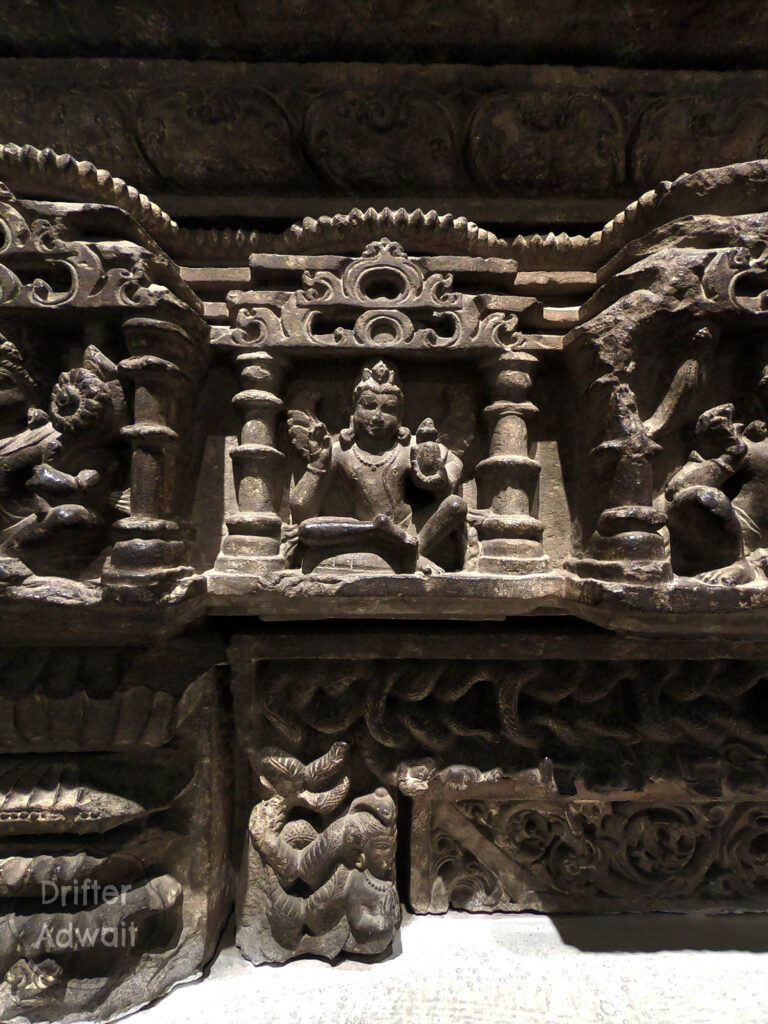
Birth of Abhimanyu
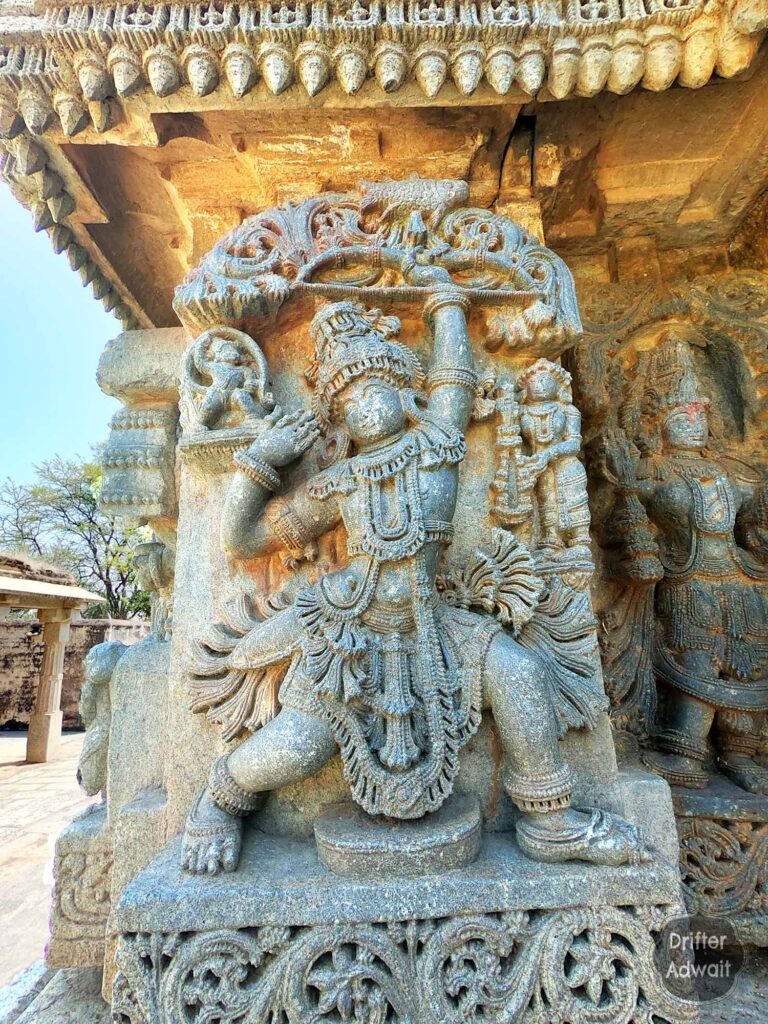
Abhimanyu first appeared during the Sambhavparva of Mahabharat, when the stage was set for the legendary war. As Ramayan was fought between the good and evil forces, Mahabharat was no exception for it. Many celestial forces give their Ansha (part of their radiance) to fight alongside the Pandavas against the evil forces of Kauravas, which was dominated by the evil forces of Rakshasaj.
So, as each god was sending his or her divine force to take a birth in human form, gods approached Chandra, the moon god, seeking his participation. Chandra spoke,
नाहं दर्शा प्रियं पुत्रं मम प्राणगरीवसम् । समयः क्रियतामेव न शक्यमतिवर्तितुम् ।।
सुरकार्यं हि नः कार्यमसुराणां क्षितौ वधः । तत्र यास्यत्ययं वर्चा न च स्थास्यति वै चिरम् ।।
My son is dearer to me than my own life, so I cannot lend him for a long time. That’s why his stay in the Mrityuloka (earth) should be fixed. Then that period cannot be violated. Killing the demons on earth is the sacred duty of the gods, and it is worth doing for all of us. Therefore, for the accomplishment of that work, Varcha will also definitely appear there. But he will not be able to stay there for long.
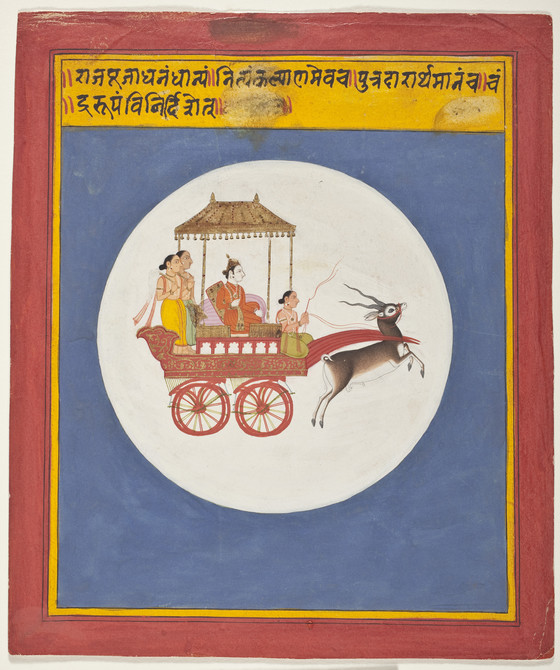
ऐन्द्रिर्नरस्तु भविता यस्य नारायणः सखा । सोऽर्जुनेत्यभिविख्यातः पाण्डोः पुत्रः प्रतापवान् ।।
तस्यायं भविता पुत्रो बालो भुवि महारथः । ततः षोडश वर्षाणि स्थास्यत्यमरसत्तमाः ।।
Lord Nar, a friend of Lord Narayan, will incarnate on the earth from the part of Indra. His name will be Arjun, and he will be considered the glorious son of Pandu. Oh, the greatest of the Gods! This Varcha will be the son of Arjun and will be considered a great charioteer in his childhood. After taking birth, he will remain there till the age of sixteen. (And he shall participate in the devastating war and will come back to me after his death, after killing millions of great worriers).
And from that day onwards, the stage was set for the fate of Abhimanyu and Chakravyuva.
Chakravyuva
Let’s journey to the thirteenth day of the momentous Kurukshetra war. Pitamah Bhishm was incapacitated, leaving Guru Dron as the Kauravas’ formidable General. Crafty Duryodhan, seeking a swift end to the war, devised a plan to capture King Yudhishthir instead of killing him. To execute this plan, Dron conceived a complex and impenetrable battle formation known as Chakravyuva.
Among the Pandavas, only three had the knowledge to break this formation: Shri Krishna, Arjun, and Abhimanyu. However, Arjun was preoccupied with battling the Trigarta brothers and the Yadava army, leaving Abhimanyu responsible for safeguarding Yudhishthir.
As Guru Dron unleashed a brutal assault, the Pandava armies suffered heavy losses, and the giant piles of Pandava soldiers’ lifeless bodies began to stagger up to the skies. Feeling the urgency to confront Dron directly, Yudhishthir decided to take an aggressive stance. He entrusted Abhimanyu with the daunting task of dismantling the formidable Chakravyuva, assuring the young 16-year-old warrior that the other Maharathis would closely follow his lead.
Filled with determination, Abhimanyu pledged a sacred oath on the battlefield to obliterate the Chakravyuva. Little did they know that this pivotal moment marked the beginning of a series of challenges and trials that would test the strength and resilience of the Pandavas. This was the precise moment when everything began to fall apart for Pandavas.
युधिष्ठिरो भीमसेनः शिखण्डी सात्यकिर्यमी । धृष्टद्युम्नो विराटश्च द्रुपदश्च सकेकयः ।
धृष्टकेतुश्च संरब्धो मत्स्याश्चाभ्यपतन् रणे । तेनैव तु पथा यान्तः पितरो मातुलैः सह ।
अभ्यद्रवन् परीप्सन्तो व्यूढानीकाः प्रहारिणः॥
Yudhishthir, Bhimasen, Sikhandi, Satyaki, Nakul, Sahadev, Dhrishtadyumna, Virat, Drupad, the Kekaya-prince, Dhrishtaketu, and the furious Matsya country worriers; all of them proceeded to the battlefield behind Abhimanyu. All of Abhimanyu’s uncles organized their armies in array to attack and ride together through the path made by Abhimanyu, protecting him.
उग्रधन्वा महेष्वासो दिव्यमस्त्रमुदीरयन् । वार्धक्षत्रिरुपासेधत् प्रवणादिव कुञ्जरः ॥
सौभद्रेण हतैः पूर्व सोत्तरायोधिभिर्द्धिपैः । पाण्डूनां दर्शितः पन्थाः सैन्धवेन निवारितः ॥
Just as an elephant comes down to the low ground and destroys the enemy, the same way, Jayadrath, the son of the VriddhaKshatra, holding his fierce and great bow, seized the progress of the enemies by using Divyastras (divine weapons). Jayadrath closed the way that Subhadrakumar Abhimanyu had carved earlier for the Pandavas by killing innumerable war elephants.
Abhimanyu in Chakravyuva
In the midst of millions of furious warriors, Abhimanyu displayed miraculous skills on the battlefield. In a blink of an eye, his chariot was completely enveloped in the sharp arrows of his enemies. Employing the formidable Gandharva Astra, he unleashed the Ratha-Maya, an illusionary technique that made him appear in multiple places simultaneously.
His feats were awe-inspiring. Abhimanyu swiftly dispatched the prince of the Ashmak Kingdom, showering King Shalya with an unending barrage of arrows until the king fainted in his chariot. Just moments later, he covered Prince Dusshasan with arrows, compelling him to retreat from the battlefield.
The young warrior even faced and defeated the great archer Karn. When Karn’s younger brother arrived to aid him, Abhimanyu’s precise arrow decapitated him. Despite being drenched in his own blood, Abhimanyu pressed on, defeating the mighty Maharathi Duryodhan.
Drenched in his own blood, Abhimanyu even defeated Maharathi Duryodhan. Seeing that, Duryodhana’s son Lakshman came to provide backup to his defeated father. Without wasting any moment, Abhimanyu decapitated Lakshman, the beloved son of Duryodhan, with a snake-like deathly spear.
Seeing this, King Duryodhan lost his temper, and Karn pleaded with Guru Dron to find the gaps in Abhimanyu’s defenses. That wise Guru worrier ordered all of his Maharathis to attack Abhimanyu at the same time.
Following the orders of the Senapati (general), Karn broke Abhimanyu’s legendary bow. Krutavarma killed his chariot horses, and Guru Krupacharya killed his bodyguards at the same time. Now, that kid was standing on the ground, facing all the Maharathis at once.
Throwing the bow aside, picking up a shield and sword, he dashed towards Karn. Without beating the eyelid, his uncle Karn shattered his shield. Even then, that brave Abhimanyu dashed towards Dronacharya, holding a chakra. In Mahabharat, Sanjay says,
विष्णोः स्वसुर्नन्दकरः स विष्ण्वायुधभूषणः । रराजातिरथः संख्ये जनार्दन इवापरः ।।
Rajan! Abhimanyu, the brave Atirathi (ultimate worrier), who brought great joy to Subhadra (Sister of Shri Krishna), was blazing on that Warland, just like his uncle Shri Krishna, holding a Chakra (disc or a wheel).
In the blink of an eye, all six warriors surrounding Abhimanyu shattered the wheel he was wielding. He killed Kalikeya, brother of Shakuni with his mace and then, he killed the horses which were tied to the chariot of the son of Dusshasan. Feeling to this personal insult, Son of Dusshasan alighted from his chariot and got into the mace war.
तावन्योन्यं गदाग्राभ्यामाहत्य पतितौ क्षितौ । इन्द्रध्वजाविवोत्सृष्टी रणमध्ये परंतपी ॥
दौःशासनिरथोत्थाय कुरूणां कीर्तिवर्धनः। उत्तिष्ठमानं सौभद्रं गदया मूर्च्छताडयत् ॥
गदावेगेन महता व्यायामेन च मोहितः । विचेता न्यपतद् भूमौ सौभद्रः परवीरहा ॥
एवं विनिहतो राजत्रेको बहुभिराहवे॥
Striking each other with the head of the mace on the battlefield, those two warriors fell on the earth like two Indra flags thrown down. After that, the son of Dusshasan first got up and struck Abhimanyu’s head with his mace. Abhimanyu, the slayer of enemies, fell unconscious on the earth, fascinated by the great speed and diligence of the mace. Rajan! In this way, many warriors together killed the lonely Abhimanyu on that battlefield.
Chakravyuva Story Panels
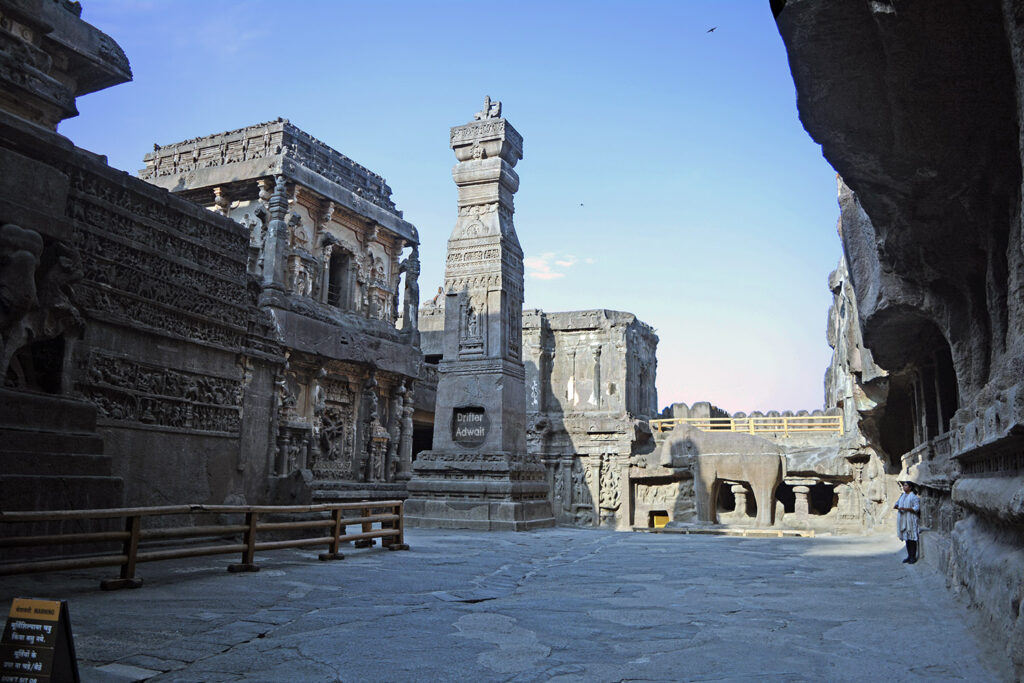

The first panel we see is on the north wall of the legendary Kailasa temple of Ellora, carved out of a single stone. In the third line from the top, and on the right, you will see Abhimanyu standing with a chariot wheel over his head. If you look closely, you will see that he has been pierced with multiple arrows and swords through his torso, and he has been surrounded by Kaurava worriers from all directions. At that time, these Kaurav Maharathis were stabbing him from the left and right direction. One in the upper right corner is trying to decapitate Abhimanyu with a spear.
This is a very accurate description of what has been mentioned in the Mahabharat. Countless arrows come out of the body of Abhimanyu, making him look like some kind of animal with thorns. Surprisingly, in Mahabharat, Maharshi Veda Vyasa depicted the same. The great sage writes,
ससूताश्वध्वजं तस्य स्यन्दनं तं च मारिष । आचितं समपश्याम श्वाविधं शललैरिव ।।
Oh, Arya! The chariot, charioteer, horses, and flag belonging to Abhimanyu were entirely covered with arrows, just like the body of a porcupine, full of thrones.
The way in which Abhimanyu has been standing tells a lot about his ‘Never give up’ attitude, reflecting his heroism. Not to mention, all of this was carved about 1300 years ago from a single giant hard rock…
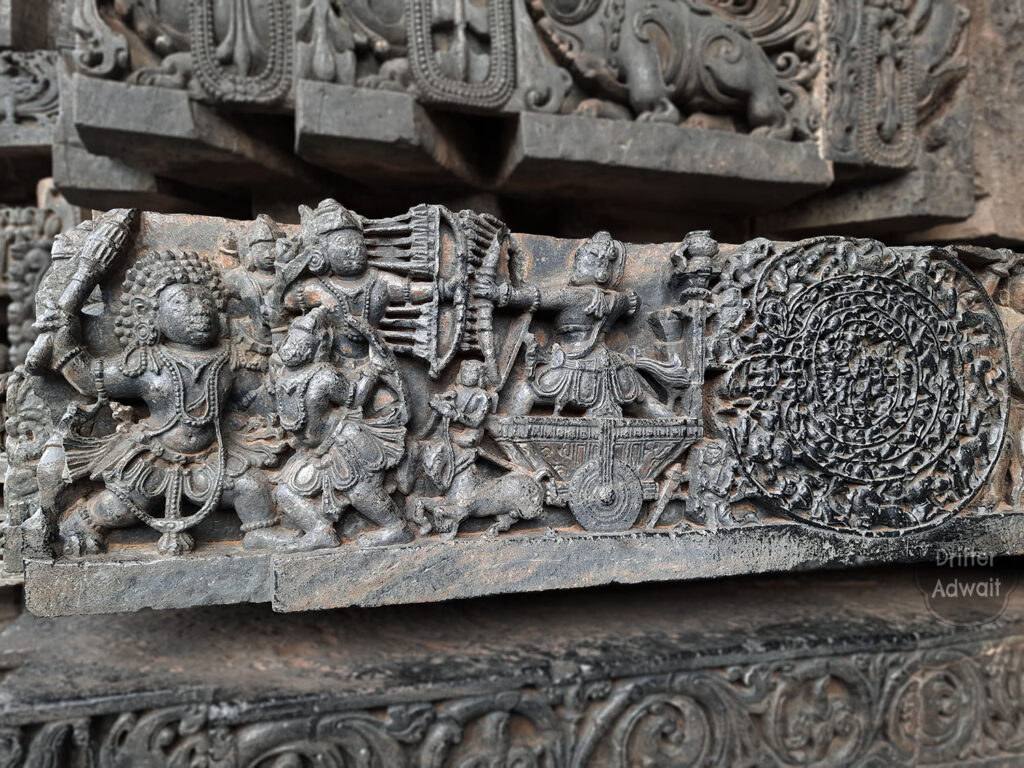
Moving on to the second sculpture. This little story panel is from Hoysaleshwara temple, Halebeedu, Karnataka, packed with very minute details. Here, you will observe a few worriers fighting with each other on the left side while a beehive-like structure is on the right. Starting from the left, you will see a demonic figure balancing a mace in his right hand. He is Vrikodar Bhim, and you can identify him with his curly hair.
Bhim is fighting with one Kaurava soldier, who is holding a sword and shield in his hands. He probably is Jayadrath, who has received a boon from Mahadev, that he would be able to stop all the Pandavas, except Arjun on the battlefield for one day.
Above him, you see a worrier releasing multiple arrows at the same time, just like they have depicted in the Mahabharat TV series. He probably is King Yudhishthir. Post that, you will see a heroic figure releasing multiple arrows while standing on the chariot. He is Guru Dron, the General of the Kaurav army. You can identify him with the flag on the pole behind him with the shape of Kamandalu (water pot).
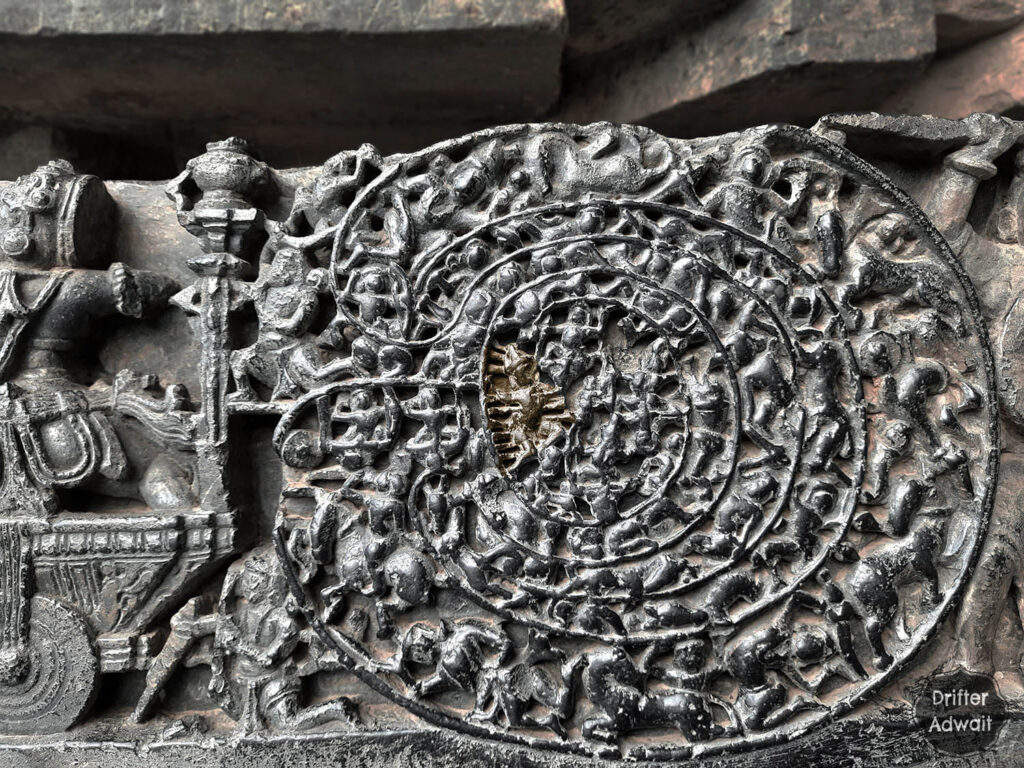
Now, let’s move on to the beehive structure, which is a legendary battle formation called Chakravyuva. This circular carving is heavily packed with very minute details. If you see it closely, you will see chariots, horses, archers, swordsmen, foot soldiers, and many more entrapped in that coil-like structure. At the center circle, you will see Abhimanyu, completely covered in arrows, surrounded by Kuru worriers. Whoever carved this clearly had a mastery not only over the chisel but over our ancient epics as well.
Abhimanyu’s tragic death resonates deeply within us. Despite being just a young child, his life was abruptly thrust into the horrors of the battlefield, where he courageously climbed onto his chariot, wore his armor, and fought to uphold righteousness and his principles. He made the ultimate sacrifice, heroically giving his life on the call of duty. These two sculptures, created thousands of years ago and situated thousands of kilometers away, immortalize the epic tale of Abhimanyu, the brave and fearless warrior who fearlessly broke into the formidable Chakravyuha formation, displaying unparalleled valor among all warriors.
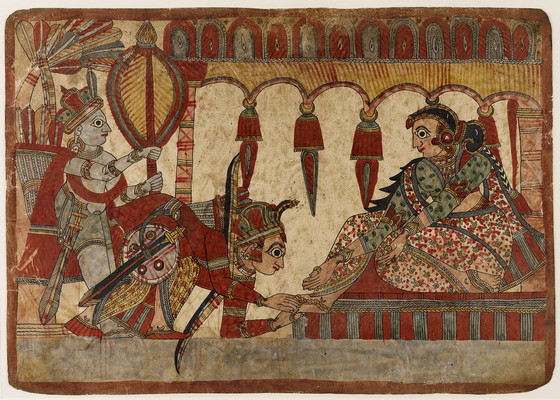
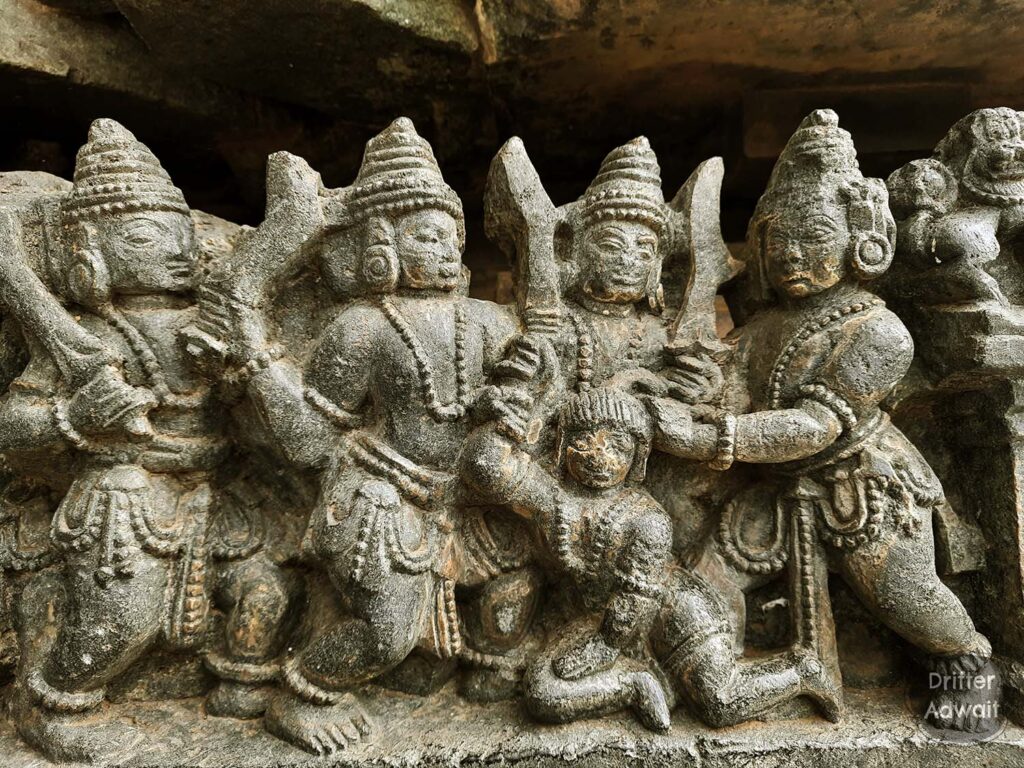
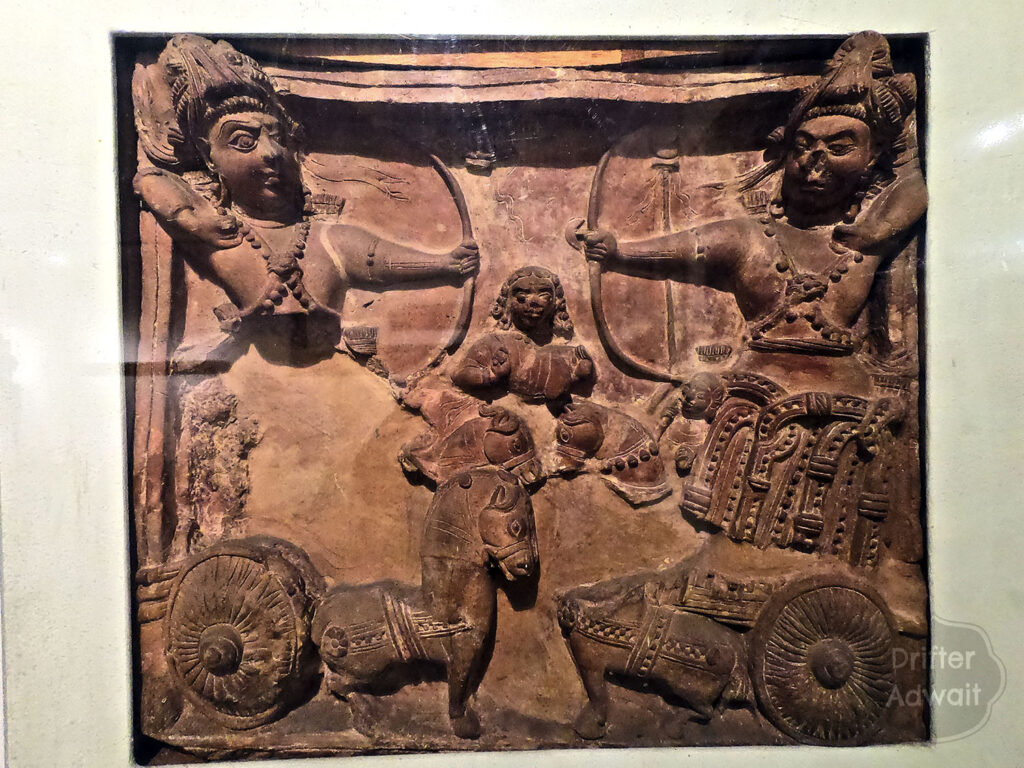
If you found this post informative and entertaining, please share it with your friends and family interested in India’s rich cultural heritage. Don’t forget to comment and let me know which temple or sculpture you’d like me to explore next.
And as always, keep exploring, keep wandering, and keep discovering the magic of this beautiful land!
Reference:
Abhimanyu Vadh Parva, DronParva, Mahabharat fourth volume, Geetapress Gorakhpur

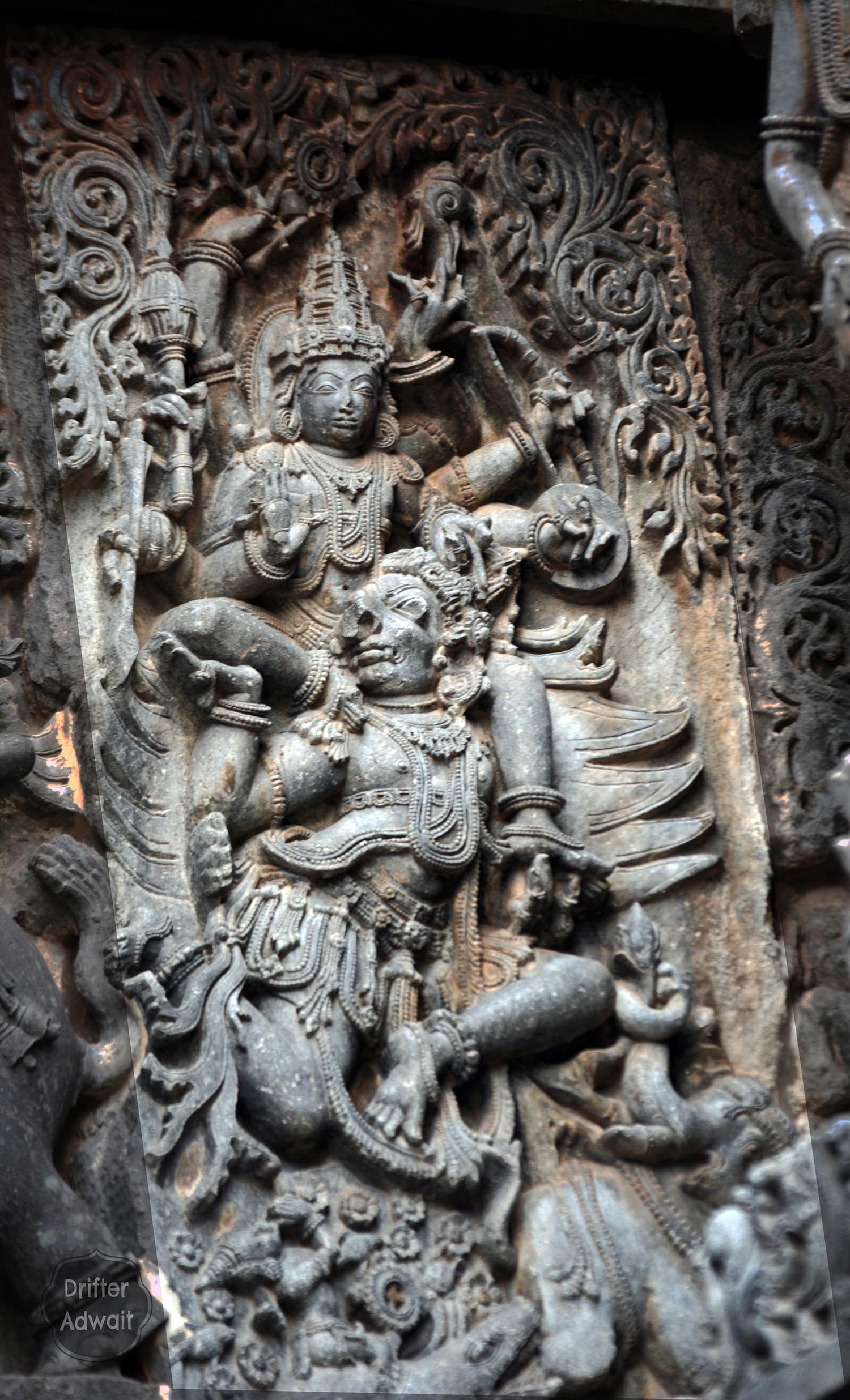


मस्त आणि खूप वेगळे काही.अभिनंदन.
Thank you very much for giving it a read Sir.
धन्यवाद सर. लेख वाचल्याबद्दल तुमचे खूप खूप धन्यवाद. तुम्ही माझा लेख वाचणे माझ्यासाठी खूप मोठी गोष्ट आहे.